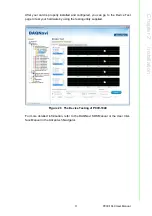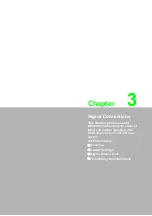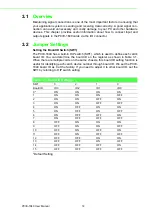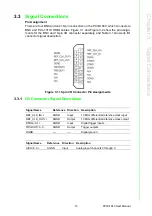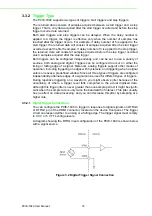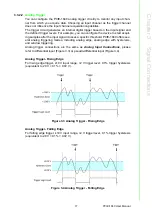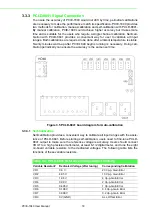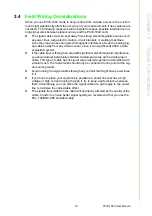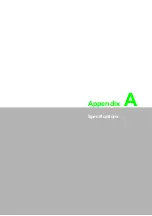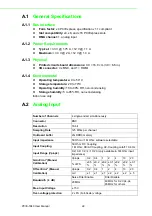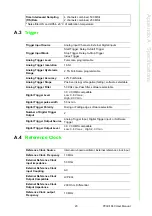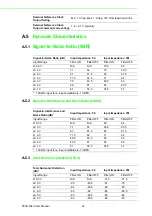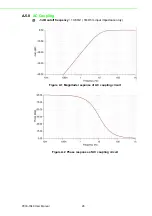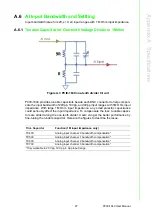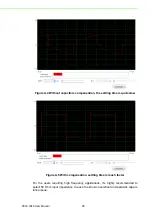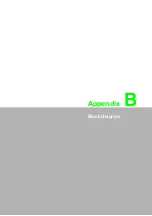
PCIE-1840 User Manual
14
3.1
Overview
Maintaining signal connections is one of the most important factors in ensuring that
your application system is sending and receiving data correctly. A good signal con-
nection can avoid unnecessary and costly damage to your PC and other hardware
devices. This chapter provides useful information about how to connect input and
output signals to the PCIE-1840 cards via the I/O connector.
3.2
Jumper Settings
Setting the BoardID Switch (SW1)
The PCIE-1840 has a built-in DIP switch (SW1), which is used to define each card's
board ID. You can determine the board ID on the register as shown in Table 3.1.
When there are multiple cards on the same chassis, this board ID setting function is
useful for identifying each card's device number through board ID. We set the PCIE-
1840 board ID as 0 at the factory. If you need to adjust it to other board ID, set the
SW1 by referring to DIP switch setting.
* Default Setting
Table 3.1: Board ID Settings
SW1
3
2
1
0
BoardID
ID3
ID2
ID1
ID0
0*
ON
ON
ON
ON
1
ON
ON
ON
OFF
2
ON
ON
OFF
ON
3
ON
ON
OFF
OFF
4
ON
OFF
ON
ON
5
ON
OFF
ON
OFF
6
ON
OFF
OFF
ON
7
ON
OFF
OFF
OFF
8
OFF
ON
ON
ON
9
OFF
ON
ON
OFF
10
OFF
ON
OFF
ON
11
OFF
ON
OFF
OFF
12
OFF
OFF
ON
ON
13
OFF
OFF
ON
OFF
14
OFF
OFF
OFF
ON
15
OFF
OFF
OFF
OFF
Содержание PCIE-1840
Страница 1: ...User Manual PCIE 1840 4 ch 16Bit 125 MS s High Speed Data Acquisition PCI Express Card ...
Страница 4: ...PCIE 1840 User Manual iv ...
Страница 12: ...PCIE 1840 User Manual 6 ...
Страница 13: ...Chapter 2 2 Installation ...
Страница 18: ...PCIE 1840 User Manual 12 ...
Страница 26: ...PCIE 1840 User Manual 20 ...
Страница 27: ...Appendix A A Specifications ...
Страница 35: ...Appendix B B Block Diagram ...












